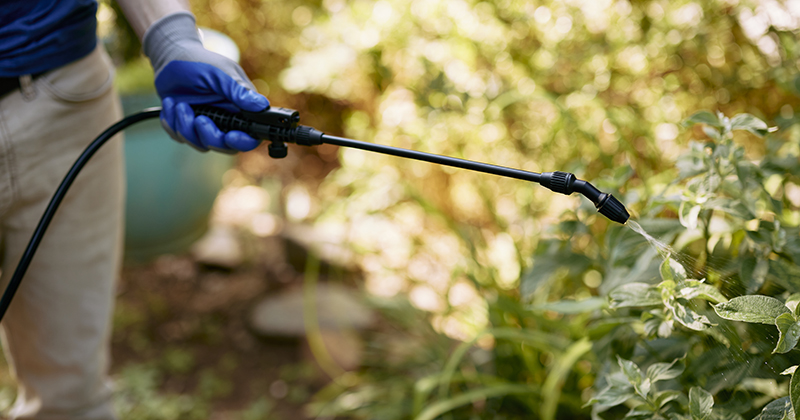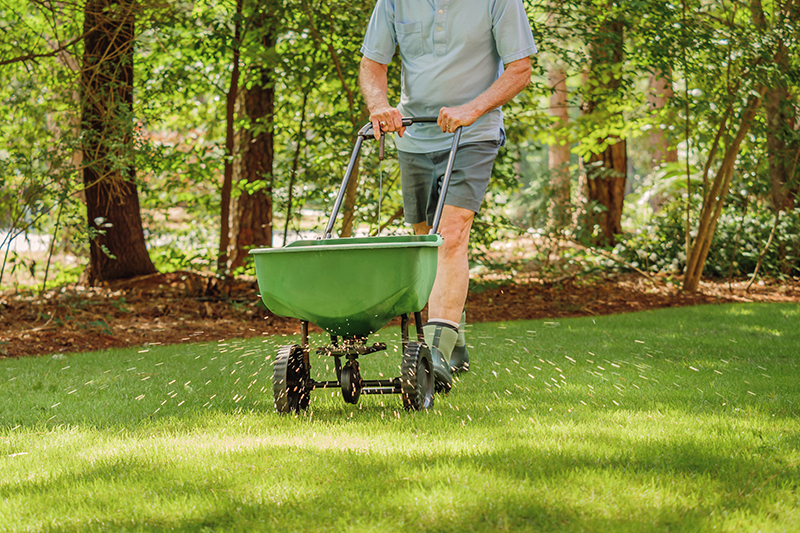Which to Use? How to Pick Your Pesticide Product
Shopping for lawn and garden pesticides can be a little overwhelming, whether you're a beginner starting your first flower garden or a seasoned rose gardener. But even with all the choices on the shelf, choosing the right product for your needs is simpler than you might think. By understanding the following product types — what pest professionals call "delivery systems" — you can choose and use pesticides with confidence:
Dusts
Dusts are dry products that consist of fine, powder-like particles. Easy to use and effective, dusts can reach into tiny crevices to find the insects or plant diseases they fight. While some dust products need a separate applicator tool called a duster, others come in simple, ready-to-use shaker containers. Some types, such as Sevin Sulfur Dust, may be used as a dry dust or a liquid spray for 2-in-1 disease and insect control.
With dry ready-to-use dusts, you don't have to measure, mix or use a separate applicator; just shake a thin, even layer on plants or lawns. Like all dry dust products, Sevin Insect Killer Dust Ready To Use is best used at chest height and lower. For taller plants, use liquid pesticides.

Ready-to-Use (RTU) Liquids
Liquid ready-to-use pesticides are premixed products that don't require any special preparation on your part. They typically come in ultra-convenient, easy-to-handle spray bottles, so you don't need separate tools for measuring, mixing or applying. Sevin Insect Killer Ready To Use2 comes in three convenient sizes that let you adjust the nozzle for coverage.
Concentrate Liquids
Concentrated liquid pesticides offer economy and flexibility, but you need a separate pump-style or backpack sprayer to use them. Concentrates such as Sevin Insect Killer Concentrate, with a convenient cap designed for measuring, must be diluted with water before use.
Because you control the measuring and mixing with concentrates, you can mix different strengths as needed. Some insects are harder to kill than others and may require higher application rates. For example, some concentrate labels may recommend different rates for pests that trouble peach trees compared to common pests on easy-to-grow garden vegetables. Mixing concentrates is simple: Just measure the recommended amount into your sprayer, then add water and mix well.

Ready-to-Spray (RTS) Liquids
Ready-to-spray pesticides, like other forms of concentrates, need to be diluted with water before use. But instead of mixing these products in a separate sprayer, you connect the bottle to a garden hose. Then the product's container becomes your sprayer.
As water feeds through the bottle, it automatically dilutes the ready-to-spray concentrate for you, so you get to skip the measuring and mixing part. Products such as Sevin Insect Killer Ready To Spray work especially well when you want easy coverage for larger areas and don't need precision as you go.
With Sevin 3-In-1 Insect, Mite & Disease Control Flower & Shrub Ready To Spray, you can kill mites and listed insect pests — and control fungal diseases in your garden, too.

Granules
Granular pesticides are dry products similar to dusts, but with larger, coarser particles meant to be applied to soil. Used to treat lawn pests or protect the perimeter of your home, granular pesticides are applied with a regular lawn spreader. You can use the same type used for spreading grass seed or fertilizers. (Just be sure to clean your spreader thoroughly between different product uses.)
Some granular products are left dry as a type of bait to attract insect pests. Others such as Sevin Insect Killer Lawn Granules should be watered in immediately to release their active ingredients and reach lawn pests where they hide.
With Sevin Garden Perimeter Insect Killer Granules, you can kill listed pests on listed fruits, vegetables, ornamentals, shrubs and flowers by contact. Then these granules keep protecting for up to three months, without harming plants or blooms.
Pellets
Pellets are very similar to granules, but they're typically more uniform and rounded in shape. Some pellets require water after application, but others work best when kept dry. Pellet products such as Corry's Slug & Snail Killer ready-to-use bait pellets are formulated to withstand rain or sprinklers and attract their target pests to eat the bait.
Pellets are typically applied by hand from a shaker container or a measuring cup or utensil dedicated to pesticides. Always scatter pellets through the garden — never leave them in piles. And never return a utensil used with pesticides to your kitchen.

By understanding the differences between pesticide delivery systems, you can pick the best pesticide product for the task. Whatever type of pesticide product you choose to use, always read and follow the label instructions thoroughly. Make sure the product's label lists the pests and plants involved. Pay special attention to guidelines for application frequency and pre-harvest intervals (PHI) for edible crops. With trusted GardenTech brands such as Sevin garden insecticides, you can rest easy knowing you made the best choice for your pesticides.
Get Monthly Gardening Advice!




